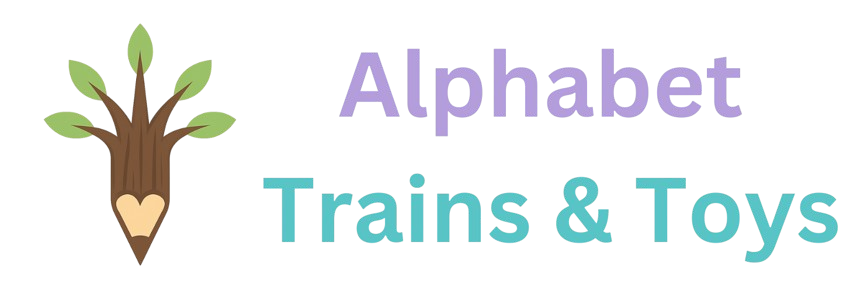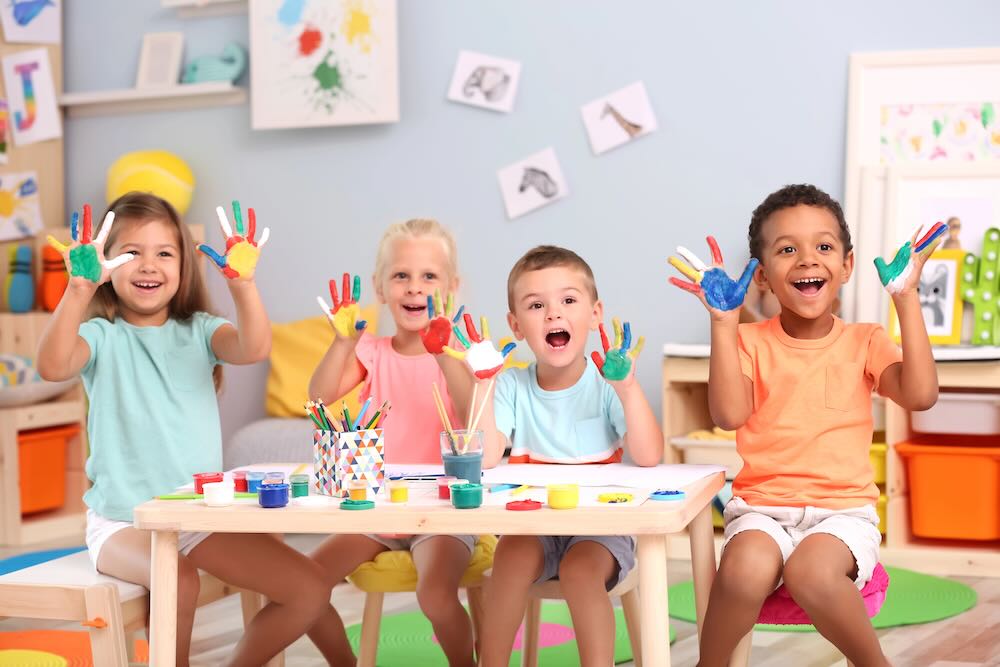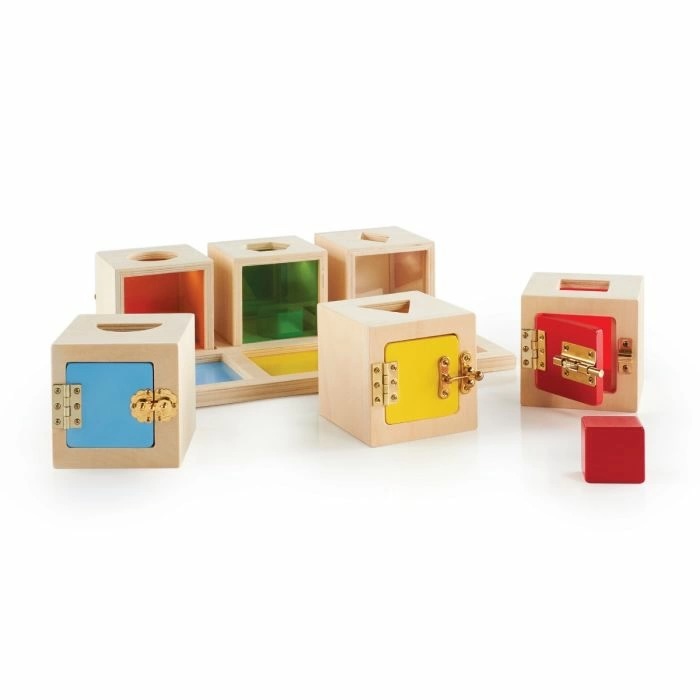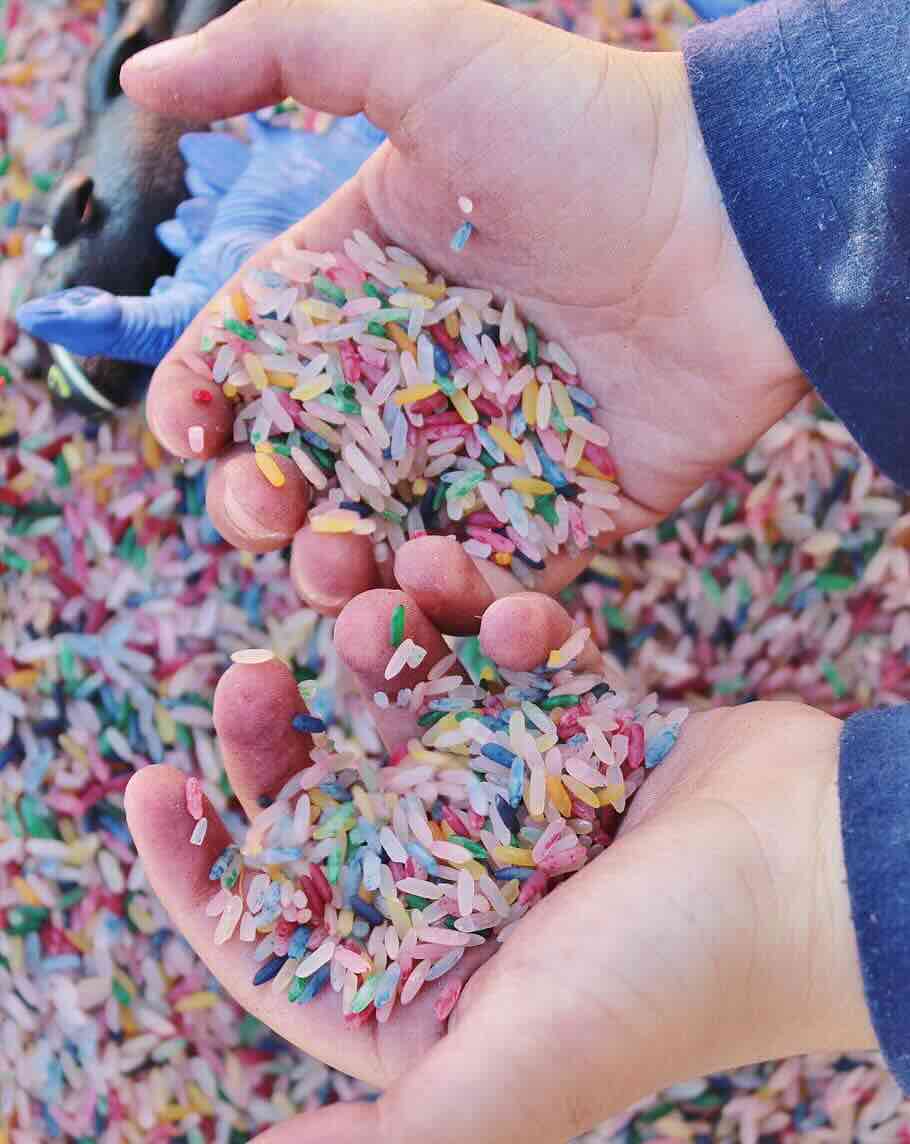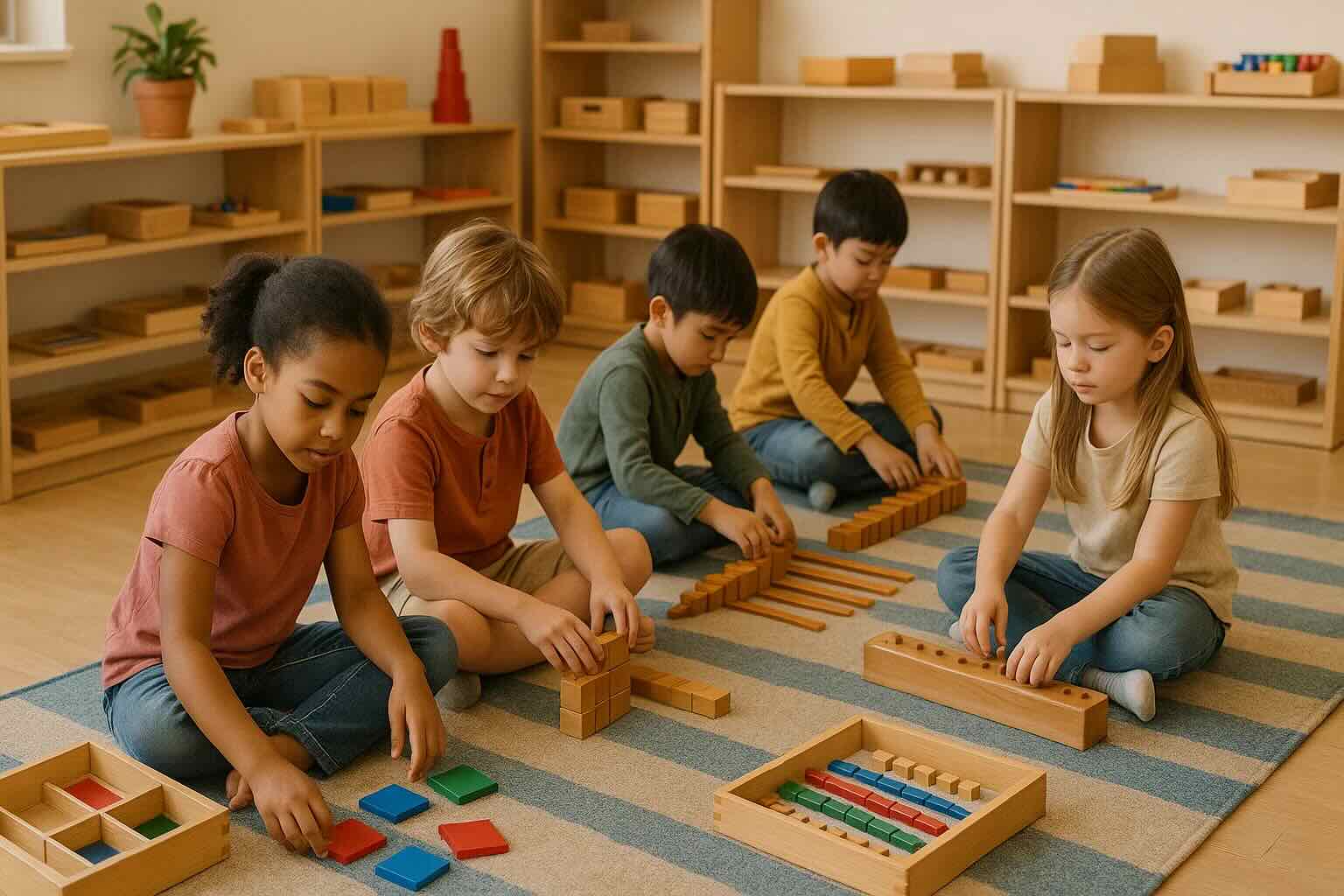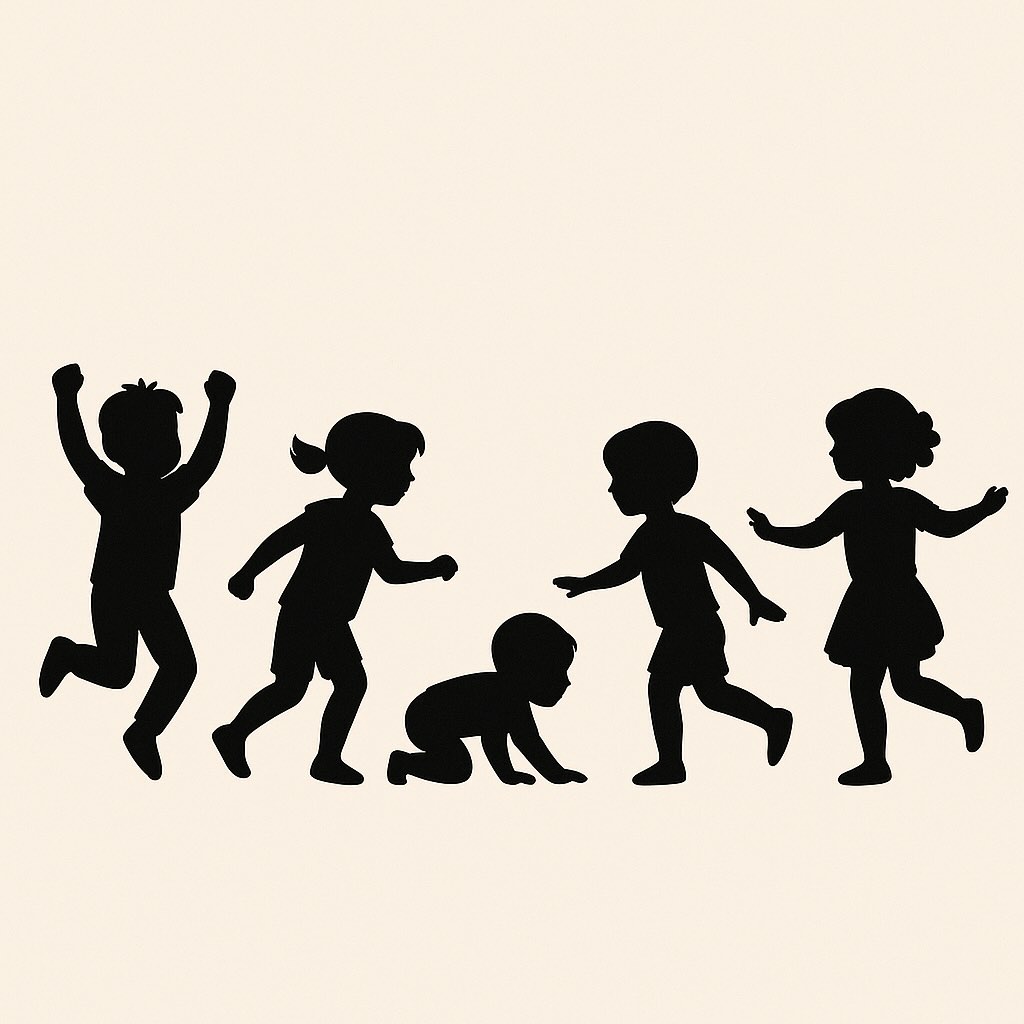Walking into a Montessori classroom feels like stepping into a carefully curated world. Soft light filters through the windows, tiny chairs sit in perfect rows, and shelves display polished wooden toys. Often parents are drawn to these spaces; they promise creativity, independence, and a love for learning. But beneath the calm surface, questions linger: Is this approach truly the best fit for my child?
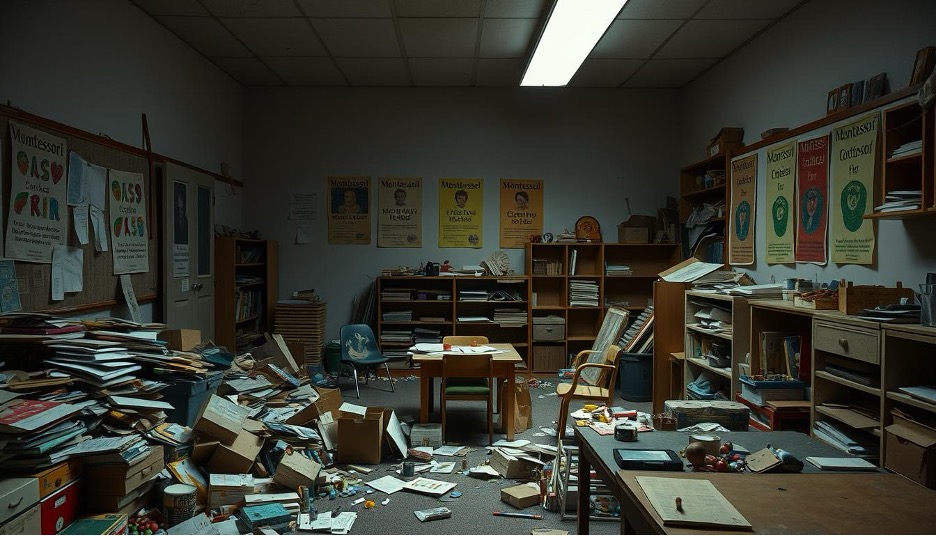
Figure 1 Montessori students thrive in neat surroundings that foster care for personal belongings. Many schools do not practice the same goals of a neat, organized space for children to learn.
Many families choose Montessori schools hoping to nurture their child’s unique strengths. The philosophy of hands-on learning and self-directed activities sounds ideal. Yet, stories from parents reveal hidden challenges. Some children struggle with the lack of structure, while others find it hard to adapt to traditional classrooms later. One mother shared, "After two years, my son couldn’t recognize basic sight words—his confidence plummeted." In short, there is no one-size-fits-all educational system that works for all children. It is up to the parents to know their child and research the best way for them to move forward in today’s world.
The goal is not to dismiss Montessori education. Instead, it’s a thoughtful exploration of what works—and what might not. There is research dealing with social skill development versus academic readiness. Parents should compare costs to public school and traditional private school alternatives and discuss how teacher training varies across programs.
Understanding Montessori Philosophy and History
In Rome’s poorest neighborhoods, a young doctor made a discovery that changed children’s education forever. Maria Montessori —Italy’s first female physician—began her work in special-education clinics, observing how kids thrived when given tools matching their natural curiosity. Her 1907 project helped to transform chaotic spaces into thriving environments where underprivileged youth mastered practical skills through self-guided exploration. It is important to note Montessori was created to help underprivileged children but is now only available to wealthy parents who can afford the expensive tuition.
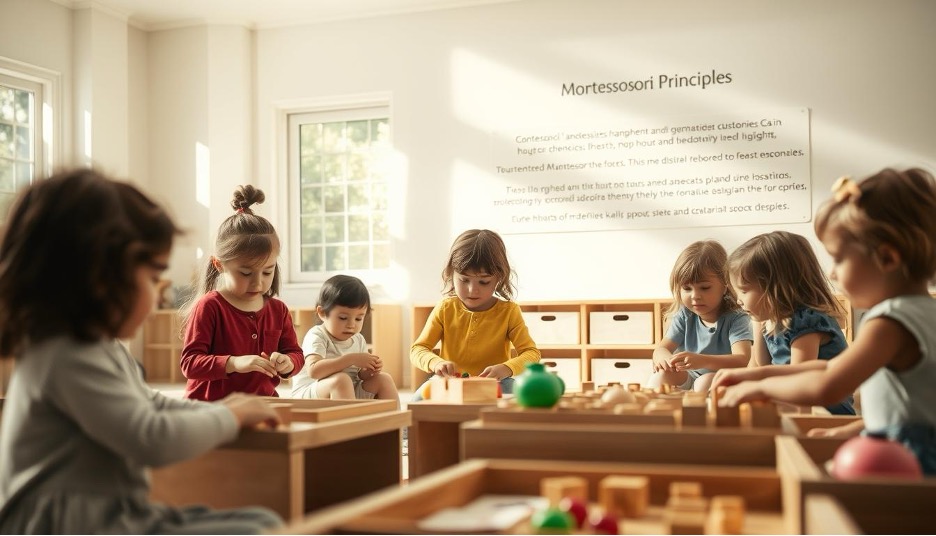
Figure 2 Montessori schools have stations that fit the size of the child to help them feel more at ease. Often children of different ages work together to learn skills and teamwork.
Montessori’s medical background shaped her unique approach to learning. She noticed children in psychiatric clinics responded better to sensory activities than rigid drills. This insight birthed her “follow the child” philosophy—trusting young minds to direct their own development through hands-on materials. Wooden puzzles and pouring exercises became gateways to math and language mastery. This is not to say that all children respond to the same type of training. Some children need more structure to help them stay focused and know what to expect each day.
Montessori Method Crosses the Atlantic
When Montessori ideas reached America in 1911, parents marveled at classrooms where 4-year-olds set tables and polished shoes. But adapting European principles to U.S. schools proved challenging. Some programs diluted her curriculum to fit traditional schedules, while others stuck rigidly to original materials. As one 1920s Montessori teacher noted: “We must honor her vision while meeting our children where they are.”
Knowing this history helps you ask better questions. Does your local program balance authentic Montessori philosophy with modern needs? Are the methods adaptable for different learners? Understanding that all children are different can help you nurture your child’s growth wisely.
The Promised Benefits of Montessori Education
Imagine your toddler buttoning their coat with determination, their small fingers mastering life skills through play. This hands-on learning approach lies at the heart of the method’s appeal. Classrooms become laboratories where children explore specially designed materials that turn abstract concepts into tangible experiences. Conversely, how many of these skills are often taught to children by their parents? How does the typical child training from parents affect what they are taught in the Montessori surroundings?
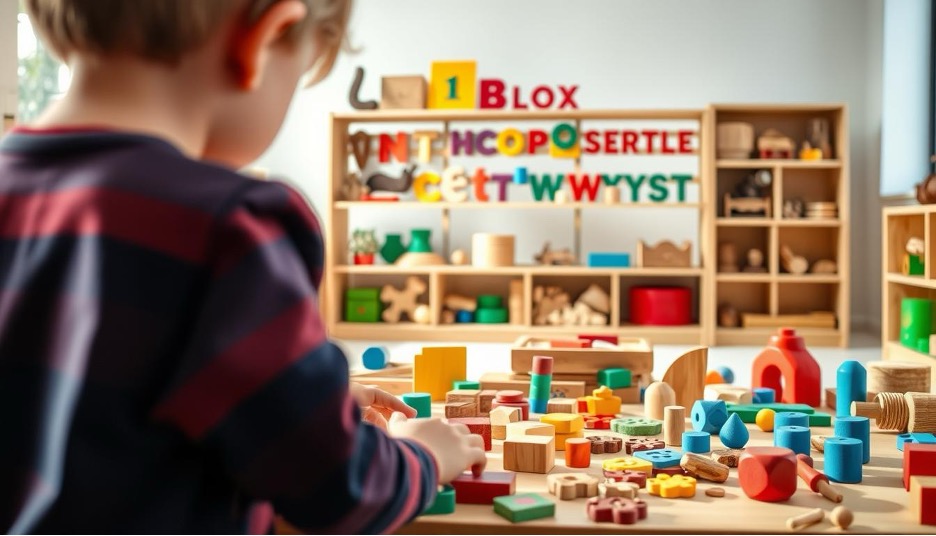
Figure 3 Montessori toys made of natural materials that even critics appreciate. Toys and puzzles that help them solve problems help to foster a feeling of independence.
Building Capable Young Minds in Montessori Schools
The Montessori method transforms everyday tasks into growth opportunities. A 3-year-old might practice pouring rice between pitchers, developing coordination while grasping volume concepts. Trained teachers observe rather than direct, allowing the child to choose activities matching their curiosity, work at their natural pace, and solve problems through trial and error. One parent shared: "My daughter learned to type before kindergarten—she thought it was a game!"
Cultivating Creative Thinkers
Open-ended activities like building geometric shapes with beads or acting out stories foster innovation. A 2017 study found Montessori preschoolers showed marginally higher creativity scores than peers in traditional programs.
Classrooms provide:
Traditional Approach | Montessori Strategy |
Pre-set art projects | Mixed-media exploration stations |
Teacher-led lessons | Child-initiated discovery periods |
Single-age groups | Multi-age collaboration |
This environment nurtures adaptability—a skill the World Economic Forum ranks among top workforce needs. By trusting children’s innate drive to learn, the approach plants seeds for lifelong curiosity. However, the early habits of working strictly at their own pace can cause problems when a child is faced with time limits later in their schoolwork and later in life.
Criticism of Montessori Method
Choosing the right learning environment for your child often feels like solving a puzzle with missing pieces. While many families thrive in Montessori settings, research reveals mixed outcomes that deserve careful consideration.
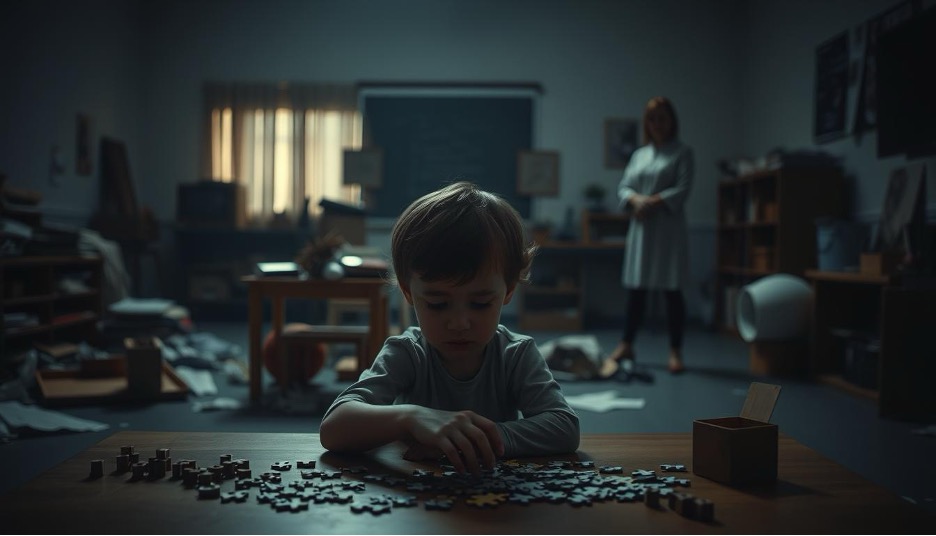
Figure 4 While children should be encouraged to work at their own pace in their own way, often children have trouble when needed structure is enforced in the household such as specific mealtimes and bedtimes.
Inconsistencies in Research Findings
Studies comparing Montessori and traditional education methods show conflicting results. A 2006 study found students excelled in reading and math, while 2018 research noted struggles transitioning to standard classrooms. This gap makes it hard to predict how the approach will impact your child’s overall skills long-term.
One parent shared: "Our daughter loved the hands-on materials, but we had no clear way to track her progress." Without standardized assessments common in other schools, some children risk falling behind unnoticed. In life, children will be expected to conform to rules to survive. Some children may need more organization at this critical stage in learning. Without regulation they can experience difficulties understanding why some rules simply exist to protect them.
Issues with Implementation and Authenticity
Not all programs labeled "Montessori" follow Dr. Montessori’s original vision. A 2022 survey found nearly half of U.S. schools using the name lacked proper certification. This inconsistency affects documentation of teacher training quality, classroom material selection, balance between freedom and structure.
In some cases, teachers without specialized credentials adapt the method in ways that dilute its benefits. As you explore options, ask about staff qualifications and program accreditation. Your child’s experience may depend more on a school’s commitment to authenticity than the Montessori label itself. This is an excellent time to ask about how the program has been updated to handle the technologies and technological skills that are expected in today’s world.
Why Montessori is Bad? A Closer Look at the Critique
When educational buzzwords outshine classroom realities, parents face a tough question: Does the method deliver what it promises? Experts note that programs labeled "Montessori" vary wildly in quality. A 2022 study found a little over half of U.S. schools using the name met core standards for instructor training and materials.
- Curriculum gaps: Some schools prioritize exploration over foundational skills
- Invisible progress: Without report cards or tests, tracking growth becomes guesswork
- Reality vs. marketing: One parent shared, "Our school’s brochure showed kids coding robots (while some Montessori curriculum limits or excludes technology)—we got bead counting and silence."
The UK’s first AMI-certified adolescent program reveals deeper issues. Students run bed-and-breakfasts instead of studying algebra. While practical, this approach leaves gaps for teens needing traditional qualifications. As one graduate noted: "I loved the freedom but felt unprepared for college math."
These inconsistencies stem from loose regulations. Unlike public schools, Montessori programs aren’t required to:
Standard Practice | Montessori Variation |
State-aligned curriculum | School-designed learning paths |
Certified subject teachers | Generalist guides |
Standardized testing | Observational assessments |
Your child might thrive in this environment—or struggle without clear benchmarks. By asking about accreditation and curriculum alignment, you’ll see past the branding to what truly happens in the classroom.
Impact on Child Development and Social Skills
You might worry that quiet focus in self-directed education limits social growth. While children often work independently, research shows mixed-age group settings create unexpected opportunities. Older students naturally guide younger peers through tasks like pouring water or arranging blocks. This mentorship builds leadership skills while fostering cooperation. The fostering of teamwork at an early age will be an excellent way for the child to thrive in work collaboration later in life.
Though Montessori classrooms emphasize individual exploration, collaborative moments emerge organically. A 4-year-old might help a classmate button coats, while third graders team up for science experiments. These interactions teach conflict resolution through shared materials, verbal communication during joint projects, and empathy across age groups.
Preparing for New Structures
Transitioning from self-paced learning to traditional classrooms can feel jarring. One parent noted: "My daughter excelled at choosing activities but needed weeks to adjust to scheduled lessons." This shift highlights the importance of balancing independence with structured collaboration.
Social Skill Development | Montessori Preschool | Traditional Preschool |
Peer Interaction | Mixed-age mentoring | Same-age group play |
Conflict Resolution | Child-led negotiations | Teacher-mediated solutions |
Collaboration Style | Organic teamwork | Assigned group projects |
To support your child's development, consider pairing school experiences with team sports or music classes. These activities provide coordinated social practice while honoring their self-directed learning strengths. While it is important for children to resolve conflicts on their own, instances of bullying or other typical childhood conflicts will need more adult interaction to be completely resolved. The goal? Helping young minds thrive in any setting life brings.
At home, comfort and routine help children feel safe while navigating different educational approaches. A personalized baby blanket offers warmth, familiarity, and a daily reminder that they are supported — no matter what method they’re learning under.
Montessori vs. Traditional Education: A Comparative Analysis
Picture two classrooms separated by philosophy rather than walls. On one side, children move freely between sensory stations. On the other, desks face a whiteboard where lessons unfold on schedule. Understanding these contrasting learning environments can help a parent match educational approaches to each child’s needs.
Classroom Design Shapes Experience
Montessori classrooms resemble living rooms with low shelves and natural materials. Children choose activities from carefully arranged stations. Traditional schools often use rows of desks facing teaching walls. This layout difference reflects core philosophies:
Element | Montessori Approach | Traditional Model |
Teacher Role | Guide observing individuals | Instructor leading group lessons |
Daily Structure | 3-hour work cycles | 45-minute periods |
Assessment | Skill mastery observations | Weekly quizzes & report cards |
A 2017 study comparing education systems found Montessori students scored marginally higher in creative problem-solving. However, traditional programs showed stronger results in standardized test preparation.
Consider these contrasts:
- Social skills develop through mixed-age collaboration vs same-grade peer groups
- Math concepts learned via bead chains vs textbook equations
- Progress tracked through educator notes vs numerical grades
One parent captured the dilemma: "We loved the creativity focus but worried about middle school readiness." Your decision hinges on what learning experiences align with each family’s goals and each child’s natural tendencies.
Evidence from Research and Studies
Education research often feels like navigating a maze of conflicting data. A landmark review of 32 international studies reveals Montessori students perform 12-18 months ahead in math and reading by middle school. Yet creativity scores show no consistent advantage—a puzzle for parents weighing different learning paths.
Academic Performance, Standardized Testing, and Creativity Outcomes
Classroom comparisons tell two stories. Montessori students demonstrate somewhat stronger problem-solving skills according to 2017 data. However, standardized test preparation is not addressed as it is in traditional programs.
Consider these contrasts:
Metric | Montessori Outcomes | Traditional Outcomes |
Math Concepts | Mastered via hands-on materials | Taught through worksheets |
Social Skills | Mixed-age collaboration | Structured group activities |
Self-Regulation | 15% higher in preschool years | Catch-up by 3rd grade |
One parent shared: "Our son thrived with practical life skills but needed tutoring for timed tests." These patterns highlight why research remains divided—implementation quality varies dramatically between schools.
Methodological challenges cloud conclusions. A 2022 analysis found that nearly half of studies accounted for differences in teacher training or material quality. As education researcher Dr. Lisa Carter notes: "We see promising trends, but more controlled studies are essential."
Each child’s experience might align with these outcomes—or chart its own course. By understanding both the data and your local program’s quality, you can make choices that honor their unique learning journey. These inconsistencies are why many parents seek balance by having their children enrolled in in public or standardized private schools and teach Montessori methods in the home.
The Role of Teacher Training and School Quality
Behind every thriving classroom lies a simple truth: great learning starts with great leaders. While child-centered environments capture attention, the real magic happens when educationalists deeply understand how to guide exploration. Accredited training transforms well-meaning adults into skilled facilitators who unlock each child’s potential.
Why Certification Matters
Programs endorsed by the Association Montessori Internationale (AMI) require 200+ hours of hands-on training. Educators learn to observe subtle cues—like how a toddler’s grip on a spoon reveals readiness for writing. They achieve better outcomes in critical thinking. These professionals master tailoring activities to developmental stages, using specialized materials effectively, balancing freedom with skill-building and understanding that each child is different in the way they adapt to their surroundings. One parent noted: "After our school upgraded its teacher credentials, my son started asking complex questions about ecosystems."
When evaluating programs, ask about staff credentials. Look beyond labels, brochures and hype during school visits. A parent should ask. “What percentage of teachers hold AMI/AMS certification? How do you balance self-directed learning with skill benchmarks? Can I observe children using Montessori materials?”
Your child’s experience hinges on this expertise—don’t settle for less.
Cost and Accessibility: Economic Implications of Montessori
Opening a Montessori school's tuition statement often reveals numbers that don’t match family budgets. The 2022 Global Montessori Census shows average annual fees reach $40,614—equivalent to $781 weekly. For many households, this exceeds mortgage payments or childcare costs. This is in direct conflict with the original idea of using this training to help underprivileged children thrive.
Three key factors create financial barriers private operations most U.S. Montessori schools lack public funding, material costs for specialized learning tools increase expenses, and small class sizes require more teachers.
Regional differences sharpen these challenges. Urban programs in cities like San Francisco charge up to $57,000 yearly triple rural counterparts. One parent shared: "We moved counties to find a program under $30k, but commute costs ate the savings."
School Type | Avg Tuition | Accessibility |
Private Montessori | $40,614 | Income-Restricted |
Public Charter | $1,200 fees | Lottery system |
Home-Based | $850 materials | Parent training needed |
While some public options exist, waitlists often stretch 2-3 years. This creates a cycle where proven benefits—like marginally higher creativity scores—primarily reach families with financial flexibility. Your decision requires honest budgeting. Can long-term rewards align with your current resources?
Guidance for Parents: Informed Education Decisions
Choosing your child’s learning path feels like navigating a garden—some paths bloom with possibilities, others lead to unexpected thorns. To find the right fit, focus on two essentials: program authenticity and alignment with your child’s unique needs.
Consider your child’s natural rhythms. A highly social learner might thrive in mixed-age groups, while a routine-oriented child could need more organization. Use this comparison to guide decisions:
Child’s Trait | Ideal Approach |
Independent explorer | Montessori methods |
Teacher-guided learner | Traditional curriculum |
Mixed needs | Hybrid programs |
One parent shared: “We chose a school offering weekly progress snapshots—it gave us confidence without sacrificing exploration.” Trust your instincts and remember: the best education adapts to each child’s growth, not the other way around.
Conclusion
Your child’s educational journey shapes their future—and your choices matter. The Montessori schools approach offers unique benefits like creative exploration and practical skill-building. Yet challenges like inconsistent program quality and academic gaps require careful consideration. Research shows success depends on authentic implementation. Look for classrooms with certified teachers and proven materials. Financial factors also play a role, with tuition costs varying widely between programs.
Every learner thrives differently. Visit local public, standardized private and other schools, ask about curriculum standards, and trust your instincts. Explore methods of combining Montessori concepts without limiting your child to only that viewpoint while in this critical learning stage of life.
Today’s educational world offers diverse paths. Whether you choose Montessori or alternative methods, prioritize environments where curiosity meets growth. With thoughtful evaluation, you’ll find the perfect setting for your child to play smart and grow smarter in today’s ever-changing world.
FAQs on why Montessori May Not Be the Right Fit for Your Child
Does Montessori education prepare kids for traditional schools later?
Some children face challenges adapting to structured classrooms after years of self-directed learning. The lack of standardized tests and rigid schedules in Montessori programs may create adjustment hurdles when transitioning to conventional education systems.
Are Montessori schools too expensive for average families?
Many programs charge higher tuition than public schools and many standard private schools, with costs varying by location and accreditation status. This creates accessibility gaps, as socioeconomic factors can limit participation despite the method’s emphasis on inclusive learning environments.
How important is teacher training in Montessori programs?
Classroom quality heavily depends on instructors holding AMS- or AMI-accredited certifications. Without proper training, leaders might struggle to implement mixed-age group dynamics or hands-on materials effectively, diluting the method’s core principles.
Do Montessori classrooms limit social skill development?
While collaborative opportunities exist, the focus on individual work periods and minimal group instruction might reduce peer interaction compared to traditional settings. Parents should observe how specific programs balance independent exploration with teamwork activities.
What does research say about Montessori academic outcomes?
Studies show mixed results—some highlight stronger creativity and problem-solving skills, while others reveal comparable (or lower) math/literacy scores versus conventional schools. Outcomes often depend on program authenticity and how “Montessori” is defined in practice.
Even skeptics of Montessori education acknowledge the value of age-appropriate learning tools. Our Montessori toys for 5 year olds promote hands-on problem solving, emotional regulation, and independence—benefits that transcend philosophical debates.
Can the Montessori method work for children who need structure?
Kids who thrive on clear routines or external motivation might struggle with the open-ended format. Observing your child’s response to self-paced learning during trial sessions helps determine if the environment matches their personality and needs.
For families balancing structure at home with flexible learning at school, even small details—like a child’s bedtime routine or a special item they sleep with—can create emotional stability. Many parents find that personalized baby blankets become a comforting constant during these early transitions.
